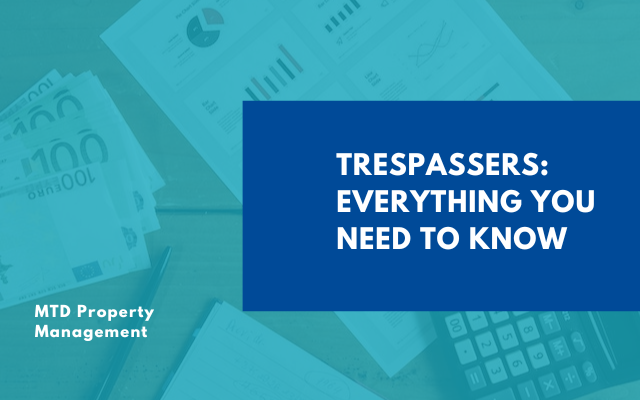
Renting out your Chicago home can be great to earn a passive income and secure a comfortable retirement. However, it’s important to remember that renting your property comes with several risks, from property damage to evictions. That’s why you must take preventive measures to keep your investment safe during each tenancy.
Walk-through property inspections are one of the best ways to safeguard your investment and cultivate a
good relationship with your tenants. In this comprehensive guide, we’ll go over everything you should know about walk-through inspections. We’ll delve into their benefits and how to conduct them successfully. Let’s dive in!
What Are Walk-Through Inspections?
A walk-through inspection, often referred to as a move-in, is a detailed assessment of the rental property's condition. This kind of inspection is conducted when a tenant is about to move into the property. The primary goal is to document the current state of the property, noting any existing damages, wear and tear, or issues that may impact the property's condition, so both tenants and landlords have a reference for future property inspections.
There are many benefits of conducting an initial walk-through inspection with your tenants, including:
- Clarifying tenant responsibilities. Move-in inspections allow you to introduce a tenant to their new living space. More importantly, this is the perfect time to review the tenant’s property maintenance responsibilities. This can greatly prevent property damage and disputes.
- Forming good landlord-tenant relationships. Taking the time to conduct a walk-through inspection will show your tenants that you’re an attentive and responsible landlord. This can go a long way in building a collaborative relationship and retaining tenants for longer.

- Complying with local regulations. Walk-through inspections help you ensure that your property complies with Chicago housing and safety regulations. By identifying and rectifying compliance issues shortly after the initial inspection, you can avoid risks such as fines and legal issues.
- Reducing security deposit disputes. You must take detailed notes and photos of the state of the property during the initial inspection. Moreover, you should get tenants to sign the inspection report. All this evidence can come in handy if a tenant disputes any deductions made to their security deposit.
- Addressing tenant concerns. Walk-through inspections are a great opportunity to address any questions or concerns tenants might have. Doing this will prove to your tenants that you care about their well-being, which can help you foster a better, long-lasting relationship.
- Long-term cost savings. Ideally, you should ensure that your rental is in good condition before a tenant moves in. However, there might be issues that are easy to miss. Walk-through inspections offer you an opportunity to identify and address maintenance issues before it’s too late, which can save you a lot of money in emergency repairs.
Tips for Conducting an Effective Walk-Through Inspection
Conducting a walk-through inspection doesn’t have to be overly complicated. Here are some tips to help you:
1. Schedule the Inspection in Advance
Coordinating a time to conduct a property inspection with your tenants can be complicated. That’s why it’s best to do it with anticipation. Ask tenants about their availability and provide them with ample notice before scheduling the inspection. Additionally, it’s a good idea to send them a quick reminder one or two days before the inspection.

2. Have a Checklist
A detailed inspection checklist will help you ensure that you don’t overlook any parts of the property during the inspection. Your list should include every room in the property and its elements, as well as appliances and fixtures. This will make it easier to keep notes of the state of the property.
3. Document Everything
In addition to detailed notes, photograph or take a video of every room in the dwelling. Make sure to have clear, timestamped pictures of any existing damages or areas of concern. This visual evidence can be invaluable when dealing with security deposit disputes.
4. Review the Lease Agreement
A walk-through inspection is the perfect time for you to review the terms of the lease with your renters. By answering any questions or concerns, you can ensure that tenants understand the terms of the lease, especially regarding property upkeep. This way, you can rest assured that your renters will take good care of your property.
5. Ensure Compliance with Building Codes
As a landlord, you are legally required to provide tenants with a safe, clean, and habitable living space. Failing to do so could lead to renters breaking their lease early or even fines and legal disputes.
That’s why you must ensure that your property complies with your local safety and building codes during each inspection. This includes verifying the functionality of smoke detectors, the condition of emergency exits, checking the structural foundation of the dwelling, and ensuring there are no safety hazards on the property.

Identifying and addressing potential compliance issues during the initial inspection can save you a lot of headaches in the future.
6. Assess Appliances and Fixtures
During the walk-through inspection, you must pay special attention to the condition and functionality of appliances and fixtures within the property. Check for leaks, unusual noises, or signs of wear in plumbing and electrical systems, as these issues can escalate to big, costly repairs if left unattended.
Assess the condition of appliances such as refrigerators, stoves, and dishwashers to ensure they are in working order and make sure tenants know how to properly use and care for any provided appliances.
7. Discuss Findings with Tenants
As you progress through the inspection, engage in open communication with your tenants. Discuss any findings, both positive and negative, and answer any questions they may have. This collaborative approach helps build trust and will make it easier to deal with any issues you encounter during the inspection.
8. Provide Tenants with a Detailed Report
After completing the walk-through inspection, you must provide tenants with a detailed report. It should include a summary of the property's condition, any agreed-upon actions or repairs, and a copy of the inspection checklist with any notes or photos you’ve taken. Both you and your tenant should retain a signed copy of this report for future reference.
Bottom Line
Walk-through inspections are a great way to introduce tenants to your rental. This simple process will not only help you assess the condition of your property but also help you show your renters that you’re a dedicated and trusted landlord.
When conducting a walk-through inspection, you must document the condition of the property thoroughly, answer any questions tenants may have, and provide tenants with a detailed inspection report. With these ten tips in mind, you are better prepared to keep your investment protected!
Need help inspecting your Chicago rental?
Contact MTD Property Management! Our team can help you with move-in and move-out inspections and regular property inspections.
Blog









